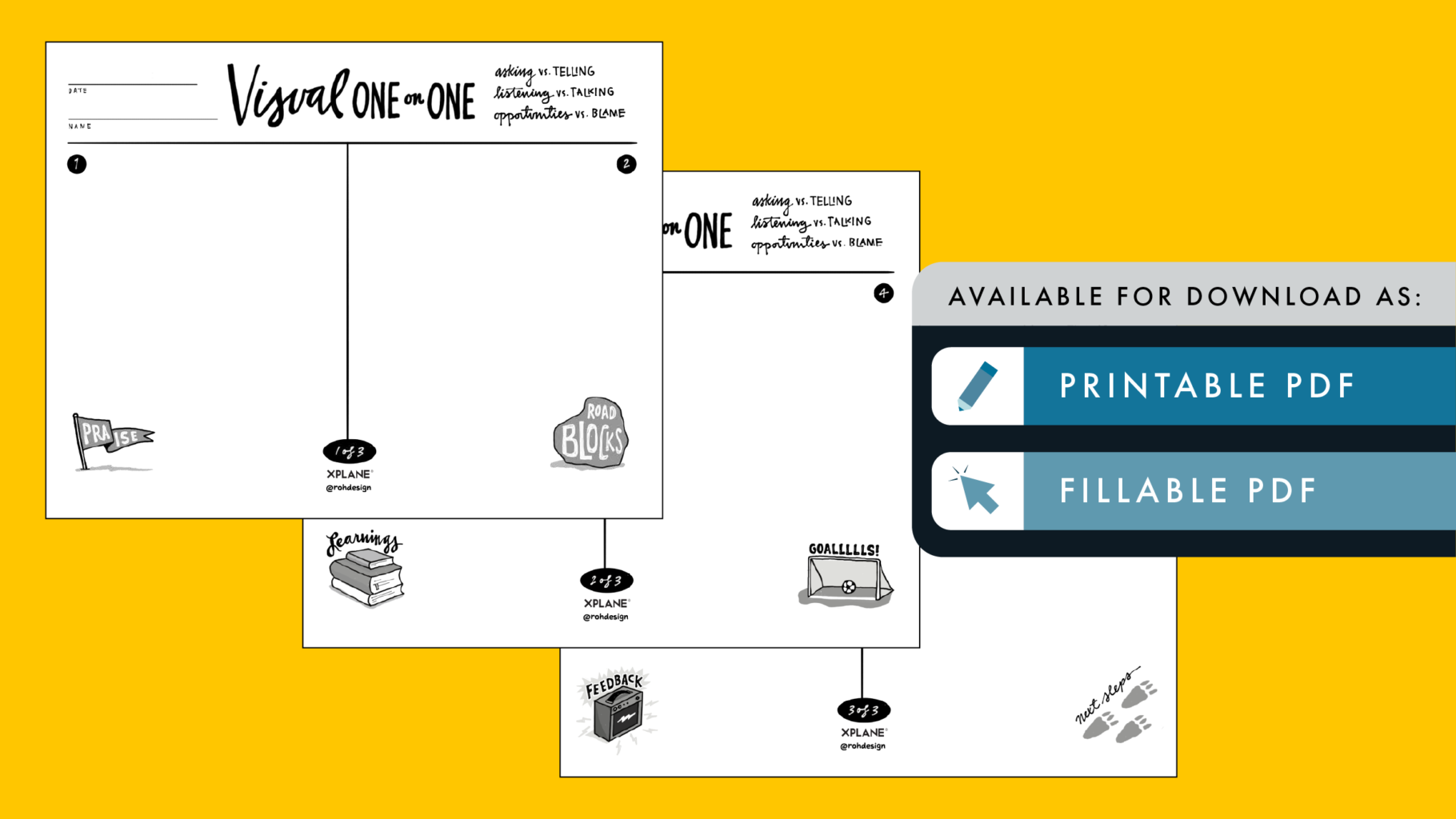One-on-ones are a building block of strong organizations, yet too often these critical meetings fall short of their true potential. Want to lead more meaningful 1:1 conversations? We suggest you try a visual one-on-one.
This blog post is a summary of our webinar Run More Effective One-on-Ones Using Visual Tools. We invite you to view the recording for expanded content, including pro drawing tips with human-centered designer and author Mike Rohde and a demonstration of how to use the Visual One-on-One canvas.
When was the last time you led an amazing 1:1 that generated energy, connection, and creative solutions?
If it’s been a while, it might be time to refresh your approach—a move well worth the effort.
According to a study by the Harvard Business Review,1 senior managers estimate they spend an astonishing $52 million a year on people issues.
From spending money on unnecessary training to applying boilerplate solutions to problems, leaders lose time and energy on issues an effective one-on-one could mitigate or avert altogether.
How to Create More Engaging One-on-Ones
Human-centered designer and webinar guest speaker Mike Rohde developed a three-page Visual One-on-One canvas leaders can use to structure engaging one-on-ones that:
- Build trust
- Encourage open communication, honest feedback, and effective collaboration
- Help people stay informed and aligned
- Provide mutual feedback for growth
- Identify and address roadblocks
From sharing praise, addressing roadblocks, exploring learnings, setting goals, offering feedback, and documenting next steps, the Visual One-on-One canvas walks you through a new way of leading these all-important meetings.

Use Visuals for Immediate Feedback and Creative Solutions
As the name of the canvas suggests, drawings are a huge part of Mike’s (and XPLANE’s) approach, including one-on-ones.
That’s because visuals open the opportunity for immediate feedback.
Here’s why.
As visual creatures, drawings offer us a natural way of working together. When you share a sketch during a one-on-one, you’re more likely to elicit interactive feedback because sketches are approachable. People feel they’re allowed to comment on and suggest changes to sketches because sketches are informal.
What’s more, you don’t have to be da Vinci to create meaningful visuals. Using Mike’s five elements and simple lettering techniques, you can create sketches to make your meetings more productive, memorable, and fun.
The key is to remember you’re not trying to represent things—you’re simply putting objects together to communicate ideas. Effective sketches are about ideas, not art, and represent a challenge or idea in a way not limited by words (words can have different meanings to different people).
Adopt a New Mindset
A final component to making your 1:1s more powerful may require a shift in your thinking.
Leaders and managers who focus on asking vs. telling, listening vs. talking, and opportunities vs. blame open possibilities for deeper, more meaningful conversations that forward personal and organizational goals.
To learn more about conducting Visual One-on-Ones, we invite you to view our Run More Effective One-on-Ones Using Visual Tools webinar recording.
Additional Resources
Want to learn more about using visuals in your organization? Click on the resources below.
- How Do You Communicate Effectively in the Workplace? Use Visuals.
- Ramp Up Your Visual Literacy: How to Encourage Online Collaboration, Alignment, and Engagement
- Curb the Chaos: Visual Frameworks for Collaborative Sensemaking
- 30 Minutes of Sketch Notes
1 Harvard Business Review. August 23, 2016. Putting a Price on People Problems at Work
